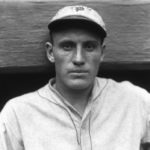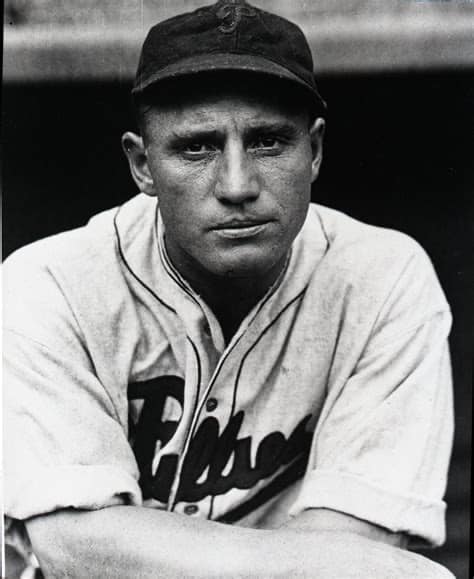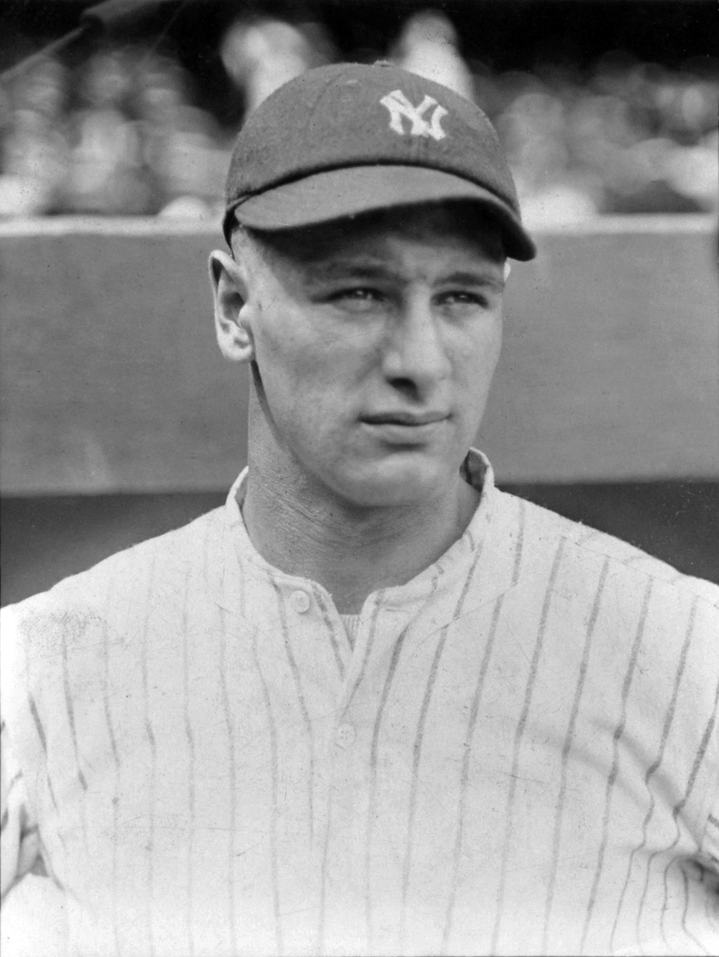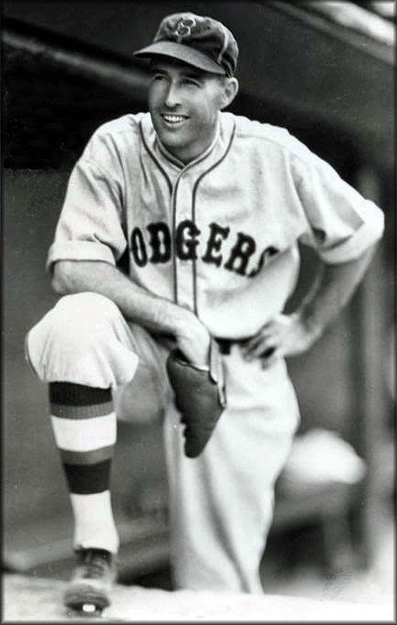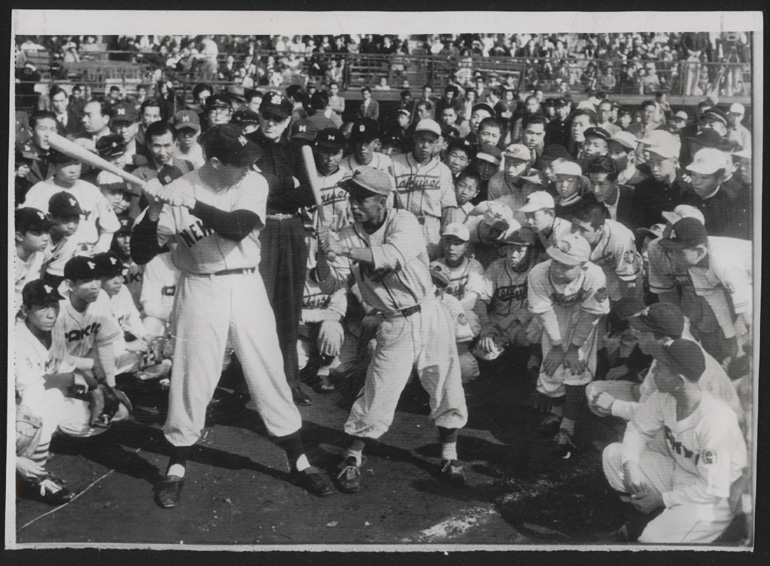Lefty O’Doul Stats & Facts
Lefty O’Doul
Positions: Leftfielder and Pitcher
Bats: Left • Throws: Left
6-0, 180lb (183cm, 81kg)
Born: March 4, 1897 in San Francisco, CA
Died: December 7, 1969 in San Francisco, CA
Buried: Cypress Lawn Memorial Park, Colma, CA
High School: Bay View HS (San Francisco, CA)
Debut: April 29, 1919 (4,735th in MLB history)
vs. PHA 1 AB, 0 H, 0 HR, 0 RBI, 0 SB
Last Game: September 30, 1934
vs. BRO 0 AB, 0 H, 0 HR, 0 RBI, 0 SB
Full Name: Francis Joseph O’Doul
View Player Bio from the SABR BioProject
Nine Players Who Debuted in 1919
Frankie Frisch
Bucky Harris
Lefty O’Doul
George Uhle
Curt Walker
Dickie Kerr
Bernie Friberg
Chick Galloway
Virgil Barnes
Notable Events and Chronology for Lefty O’Doul Career
Intro
How did a baseball player named Lefty O’Doul become so popular in his native San Francisco that a bridge was named after him? The answer is complicated but legendary in the Bay Area. O’Doul began as a pitcher for the San Francisco Seals of the Pacific Coast League, working his way to the big leagues for brief stretches, but an arm injury forced him to concentrate on his hitting. At the age of 31, in 1928, he made it back to the majors as an outfielder with the New York Giants. The following year with the Phillies, the hard-hitting O’Doul smacked 254 hits and 32 homers, while batting .398 to win the first of his two batting titles. He topped the 200-hit mark twice more, and batted .300 or better six times in his “second career.” Lured by a fat contract to manage the Seals back in his home city, O’Doul took his career .349 batting mark and returned to the West Coast in 1937. He held that position for 15 seasons, managing some of the best players to come out of California. A player’s manager who preached fundamentals and preparation, as well as hard-swinging at the plate, O’Doul won several PCL titles and became the winningest skipper in that league’s history. In the 1930s and after World War II, O’Doul almost single-handedly spread baseball through Japan, through several visits to that country. His clinics in the Far East made him a hero in Japan (O’Doul is a member of the Japanese Baseball Hall of Fame), and cemented his status as a pioneer. Likable and gregarious, O’Doul could often be found behind the bar at his popular restaurant in San Francisco, wearing his favorite attire, which resulted in his nickname: “The Man in the Green Suit.”
Replaced By
Lefty was hitting just .252 when the Dodgers dealt him to the Giants in 1933. They trotted 33-year old Hack Wilson out to left field after the trade.
Best Season
O’Doul led the league with his gaudy .398 average and banged out 254 hits. He also slugged 32 homers, drove in 122 runs, and scored 152 runs. He finished second in National League Most Valuable Player voting to Rogers Hornsby, who led the Cubs to the pennant.
Factoid 1
In 1929, Lefty O’Doul struck out just 19 times in 638 at-bats, and batted .398.
Factoid 2
In 1931, Lefty O’Doul made his first trip to Japan, with a team of major league All-Stars. He made more than 30 trips to that country during his life, spreading the gameof baseball and helping to teach fundamentals. After the conclusion of World War II, General Douglas McArthur asked O’Doul to continue his trips to the Far East, helping to repair relations between the U.S. and Japan.
Transition
July 23, 1922: Traded by the New York Yankees with Chick Fewster, Elmer Miller, Johnny Mitchell, and $50,000 to the Boston Red Sox for Joe Dugan and Elmer Smith. October 29, 1928: Traded by the New York Giants with cash to the Philadelphia Phillies for Freddy Leach. October 14, 1930: Traded by the Philadelphia Phillies with Fresco Thompson to the Brooklyn Robins for Clise Dudley, Jumbo Elliott, Hal Lee, and cash. The Phillies were a miserable team, and this deal was one of economics. They rid themselves of higher-priced O’Doul and Thompson, and got three players and some much-needed money in return. June 16, 1933: Traded by the Brooklyn Dodgers with Watty Clark to the New York Giants for Sam Leslie. February 16, 1935: Released by the New York Giants.
Strengths
Pulling the ball
Weaknesses
Arm strength and range in the outfield. O’Doul would have thrived as a designated hitter. He was traded twice because of his mediocre play in the outfield.
Description
O’Doul was light-haired with deep-set green eyes. He was considered quite handsome and he dressed impeccably.
Lefty O’Doul’s Restaurant
Bay Area native Robert Nishihara describes the atmosphere of Lefty O’Doul’s Restaurant, which Lefty opened in San Francisco in 1958: “My Aunt who is a big Giants’ fan would take me there as a kid after Giants games. The freshly carved roast beef sandwiches were a big treat, as were the crunchy sourdough rolls they were served on after being generously dipped in piping hot au jus. There was also a big barrel full of whole dill pickles, and patrons were welcomed to pull them fresh from the barrel. All the while, Lefty benevolently watched over us from the myriad of pictures documenting his unique life that covered the walls. Baseball, great food, and San Francisco- even his restaurant couldn’t resist the influence of its namesake.”
The Lively Ball Debate of 1929
As Lefty O’Doul was flirting with the .400 mark in 1929, Time magazine ran this blurb in their July 29, 1929 issue: [The] greatest topic of discussion in baseball this year has been the “lively” or “rabbit” official ball. Experts at playing, watching and writing about the game have become convinced it is the cause of a rise of 50 points in batting averages during recent years, the cause of multifarious homeruns, of double-figure scores. A. G. Spalding & Bros., official ball manufacturers† maintained that the “lively” ball is a myth, that no change had been made since 1909, when the cork centre was introduced. When the New York Telegram, crusading against the “lively” ball, last week produced cross-sections of a 1919 ball and of a 1929 ball to show that the 1929 ball contains a layer of rubber not found in its 1919 ancestor, Julian W. Curtiss, Spalding president, wrote to the Telegram: “Let me assure you that the life of the ball has not been changed since 1920.” He left the inference, satisfying to sticklers, that it had been changed between 1919 and 1920.”
@ET-DC@eyJkeW5hbWljIjp0cnVlLCJjb250ZW50IjoicG9zdF90YWdzIiwic2V0dGluZ3MiOnsiYmVmb3JlIjoiTGVhcm4gTW9yZSBhYm91dCB0aGUgdGVhbXMsIHBsYXllcnMsIGJhbGwgcGFya3MgYW5kIGV2ZW50cyB0aGF0IGhhcHBlbmVkIG9uIHRoaXMgZGF0ZSBpbiBoaXN0b3J5IC0gLSAtIC0gLSAtIC0gIiwiYWZ0ZXIiOiIiLCJsaW5rX3RvX3Rlcm1fcGFnZSI6Im9uIiwic2VwYXJhdG9yIjoiIHwgIiwiY2F0ZWdvcnlfdHlwZSI6InBvc3RfdGFnIn19@
Factoids, Quotes, Milestones and Odd Facts
Other Resources & Links




